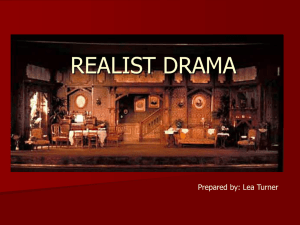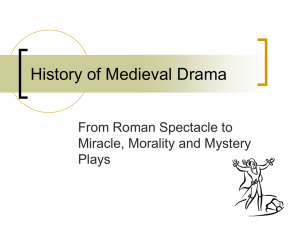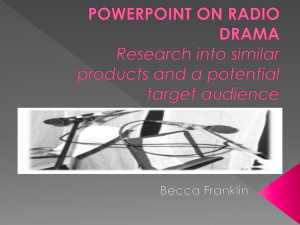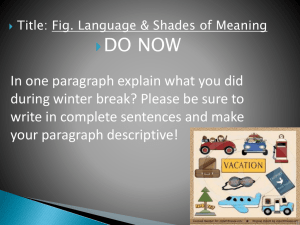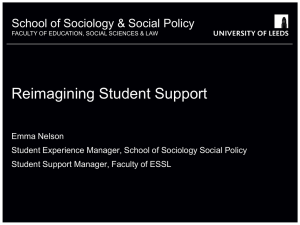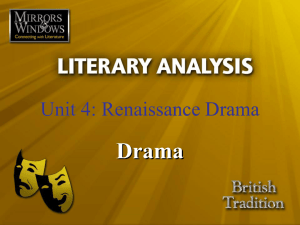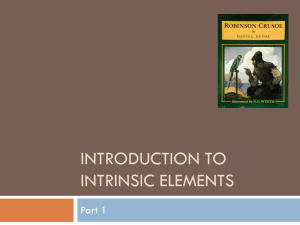The First Fleet: John`s Journey
advertisement
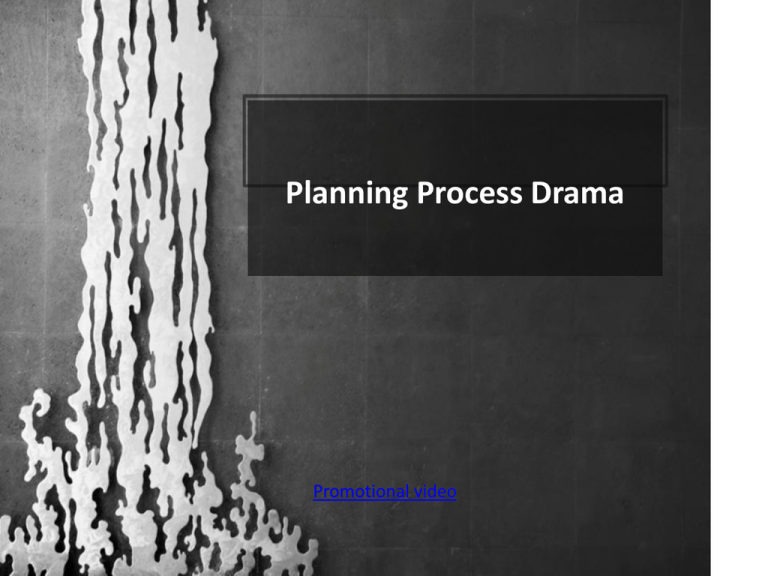
Planning Process Drama Promotional video Interactive workshop THE FIRST FLEET: JOHN’S JOURNEY Today • Review the planning steps and key components of process drama…briefly • Participate in a process drama based on the First Fleet (selected parts). • Review an example of a process drama applying these planning steps • Deconstruct the plan of the First Fleet and link this back to the planning steps. Great example Year one maths…. View you tube clip. Maths story land PROCESS DRAMA….WHAT IS IT… What is process drama? Descended from dramatic play…natural extension of play • The teacher acts as teacher, director, coplaywright and co-player with the students • The narrative might change based on the students ideas • The teacher selects a range of dramatic conventions to explore the key learning question and the human context suggested by the dramatic pre-text The Twelve Steps • Planning an introductory level process drama • Clear central role for students to explore in the experiential phase • Important to consider the prior experiences of students and the drama skills they require and build these before commencing process drama. Use drama games and short activities to build student’s understanding of freeze frame, role play, role circle and dramatic tension. Lets look at the 12 Steps Today we are exploring a basic process drama structure with one key role. This is an introductory level drama suitable for year 4. More advanced dramas could explore multiple roles and contexts. I have developed a recipe/ method for the basic central protagonist process drama……the twelve planning steps. 1. Craft the focus question Today’s drama • Were the convicts who sailed on the first fleet to Australia criminals or victims? 2. Select the dramatic frames • Inside the dramatic action • On the edge of the dramatic action • Outside the dramatic action 1787 On board one of the ships of the First Fleet. The youngest convict ever sentenced for transportation. The Friendship Preparing for the journey. Building the boats planning the trip. Loading the ships with the convicts In the present day. The students as historians meet a relative of one of the convicts and they provide information about the era. 3.Select or create a pre-text Today’s pre-text Can you imagine just for a moment that you are living in another time and place. Over 200 years ago in 1787 in a country called England. You are about to go on a long journey to a new country that you know very little about on the other side of the earth. You are being sent to a start a new settlement in a place called Botany Bay…in New South Wales it will take you over eight months to sail over 24000 kilometres to sail by ship because it is on the other side of the world. You are not alone…many others were transported with you.. You have no choice….you must go on this journey and you know that may never return home again. 4. Build the participants’ understanding of the context • • • • • • How many masts does the ship have? What is the ship made of? How many sails does the ship have How is the ship powered? What colour is the flag? What colour are the sails? Blanket Role – Mantle of the Expert HISTORIAN Expert on life in LONDON 1780’s Dr (Your real Name)______________________ Historian’s code: Seeking the truth through evidence 5. Choose a central role for the participants to explore • John Hudson youngest convict • Normally this would be a fictional character however given the time difference there is enough distance in to not have the real context impact on the drama…..therefore I have used a real name. Transport Ships • The Alexander The Charlotte The Lady Penrhyn The Friendship The Prince of Wales The Scarborough 6.Build belief in the central role • • • • John Hudson Monologue Postcards and the journey A map of John’s Journey The role circle London 1783 – for many a city of poverty and despair, food and shelter was scarce and expensive, few had jobs and many were forced to steal in order to feed themselves and their families. The narrow dirty streets were crowded with beggars, pickpockets and all manner of desperate men, women and children. John Hudson was a chimney sweep fr0m Middlesex, was arrested while breaking into a house for burglary and was sentence to trial at the old bailey. The penalty for burglary was death but because of his age, Hudson sentence was reduced to seven years transportation. John Hudson was 9 years old. 7.Provide opportunity to embody the central role • The role circle 8. Inject a tension for the central role to confront • Will John steal on the boat or not? HUMAN CONTEXT FOCUS MOOD SPACE< TIME< MOVEMENT ROLE TENSION SYMBOL LANGUAGE CREATING DRAMATIC MEANING. Using the elements of drama to make meaning… The elements of drama the building blocks of drama DRAMATIC MEANING Tension Tension • The most essentially dramatic of all the elements, TENSION is needed to turn this human context into dramatic action. To keep the audience and the participants interested in the situation and the characters, there has to be something significant at stake. The tension can be provided in many ways. The tension can be provided in many ways: the tension of the task: the urgency and importance of what the characters have to do to achieve their goals or deal with the situation dilemma, where the characters face difficult choices; conflict, the clashes of interest, power or personality between or among the characters, or their misunderstandings. Which tension will you include in your scene? 9. Explore the tension through dramatic conventions Today…. Find a partner • One of you will take on the role of John Hudson and either another convict or a guard. It is your choice. Your short scene must have 10 lines of dialogue, start with a freeze frame and convey to the rest of the class what John decides to do. The scene must include dramatic tension. Decide which tension. 10.Plan for a reflective activities • Future predictions • Writing in role…. 11. Evaluate the plan Use these great questions developed by John O’Toole to rethink the process drama plan: • • • • • • • The Context has the situation been clearly set up? Have the students has sufficient time to build belief? To enrol themselves or understand the perspective of their characters in the situation? The time scale and tempo – Are they appropriate? It is tempting to try and rush the drama. Drama actually works better the slower you take it? The focus/ framing – are we clearly working inside the dramatic action, or on the edge or on the outside? This can add protection and distancing. Dramatic tension- is the class going to be really gripped by the unfinished business, the unanswered questions? The place and the space – are the real life and fiction congruent? Are we trying to have a press conference with the reporters sitting on the floor. The language and the movement – is the language we are speaking appropriate in genre and register? Are students having the opportunity to physicalize the situation and the gesture? The mood and the dramatic symbols – are these adding to the significance? Source; O'Toole, J. (2008). Process, dialogue and performance: The dramatic art of English teaching. In M. Anderson, J. Hughes & J. Manuel (Eds.), Drama and English teaching: Imagination, action and engagement. (pp. 2-13). Melbourne: Oxford. 12. Revise the plan….

